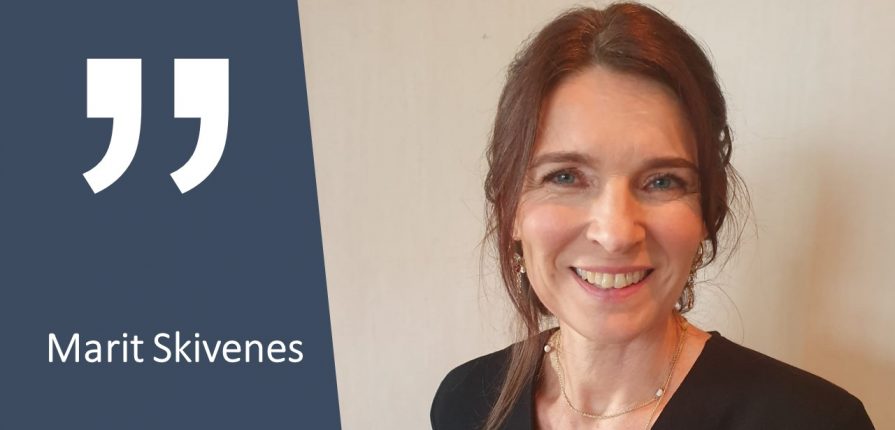Why does Norway have significantly more involuntary removals than Sweden and Finland?
Some criticize the Norwegian child protection system for removing too many children against their parents’ will. It would be better if removals of children were consensual, i.e. that parents and the child give their consent.
At the outset this sounds plausible, and it resonates with the basic idea that people should be free to make their own choices. However, is it wise to expect and demand consent in intrusive interventions such as a removal of a child?
First, it is clear that countries have chosen different strategies to this question. The book “Child Welfare Removals” from 2017 examines the differences between countries in terms of voluntary and involuntary placement of children. In Norway, 71% of placements are defined as involuntary; in England it is also 71%; in Massachusetts, USA, it is 83%. However, in Finland there are 19% involuntary placements and in Sweden 26%.
Norway is as a society overall much more similar to Sweden and Finland, than to England and USA. So, why are we different than these two Nordic countries in terms of having involuntary removals?
Different decision-making systems
An important reason why Sweden and Finland are different from Norway at this point is that they have a different system for making decisions. In Norway, all care order decisions made by the county board, are defined as involuntary placements (coercion) to ensure due process and rule of law.
This is the case even if the parents’ consent to a removal. This was a deliberate choice by legislators in 1991, due to strong criticism of the decision-making processes that took place in the many municipal committees. Interestingly, Sweden chose to keep the decision-making system with municipal committees – the same system Norway chose to scrap due to lack of due process for parents and children.
Hidden coercion
Second, there is serious concern expressed by central Finnish* and Swedish** researchers about a hidden coercion, that they believe voluntary placement of children in child welfare entails: There is doubt as to whether parents actually give informed consent to a care order or placement, and there is generally little knowledge and research on voluntary placement in child welfare in all the Nordic countries.
In one of the few studies that exist, a qualitative study of finish parents and children involved in removal cases, the authors state that “The decisions, whether following the protocols for voluntary or involuntary care-order decision making, should be legitimate and the people involved should be fully aware of their rights and obligations in each protocol (Berrick, et al., 2015). From that perspective, there are obviously several critical points, informed consent in particular, in the dual decision- making system which should be examined carefully in Finland…” (Pösö et al, 2018, p. 269).
Conditions for an informed consent
Third, to provide a valid informed consent, typically six conditions must be fulfilled: 1) Absence of coercion and undue influence. 2) The person must be capable to give consent. 3) The person must consent to specific procedures. 4) The forms of consent must be valid. 5) The person must have the right to refuse and withdraw a consent. 6) A person’s consent and decision must be based on adequate information.
This is what the child protection system must demonstrate are in place when a consent is given, but may be very difficult to facilitate at the front end of the system that simultaneously shall provide services and prepare a placement application.
Over-reporting of involuntary cases
A note on statistics, which is notoriously difficult to compare across jurisdictions: When the Norwegian system by default sets intrusive interventions as involuntary intervention, it results in an over-reporting of the number of involuntary cases. As far as I know, there are no statistics available over how many of the cases decided by the county board that actually are voluntary care orders.
An indication of the scope can be found in a study of adoption as child welfare measure. Figures for all the adoption cases decided by the county board in the period 2011-2016 show that 20-25% of parents consented to the adoption (Helland & Skivenes 2019). However, in the Norwegian child protection system and in the public statistics, all these cases are categorized as involuntary adoptions.
To conclude; it can be debated whether defining all serious child welfare interventions as “involuntary and non-consensual cases” is the best solution, but I think it is important that child protection interventions in a family are tried for an independent instance even when parents consent.
It is the child’s interests that must be decisive, and the state must ensure that this is a decisive consideration. The basis for the parents giving informed consent is also better secured, in my opinion, by an independent decision-making body such as the county board.
Sources:
- * Pösö, T., Pekkarinen, E., Helavirta, S. and Laakso, R. (2018). “Voluntary” and “involuntary” child welfare: challenging the distinction. Journal of Social Work 18 (3): 253–272. DOI: 10.1177 / 1468017316653269
** Leviner, P (2017). The consensus construct in LVU – an analysis of the boundary between voluntariness and coercion, basic assumptions about human autonomy and children’s limited self-determination. In Leviner, P & Lundström, T (ed.) (2017) Forced care of children and young people. Stockholm: Wolters Kluwer. (In Swedish: Samtyckeskonstruktionen i LVU – en analys av gränsdragningen mellan frivillighet och tvång, grundantaganden om människans autonomi samt barns begränsade självbestämmanderätt. I Leviner, P & Lundström, T (red.) (2017) Tvångsvård av barn och unga. Stockholm: Wolters Kluwer.) - Berrick, J., Peckover, S., Pösö, T. and Skivenes, M. (2015). The formalized framework for decision-making in child protection care orders: A cross-country analysis. Journal of European Social Policy 25(4): 366-378.
- Burns, K. Pösö, T. & Skivenes, M. (eds.) (2017). Child Welfare Removals by the State: A Cross-Country Analysis of Decision-Making Systems. New York, NY: Oxford University Press


